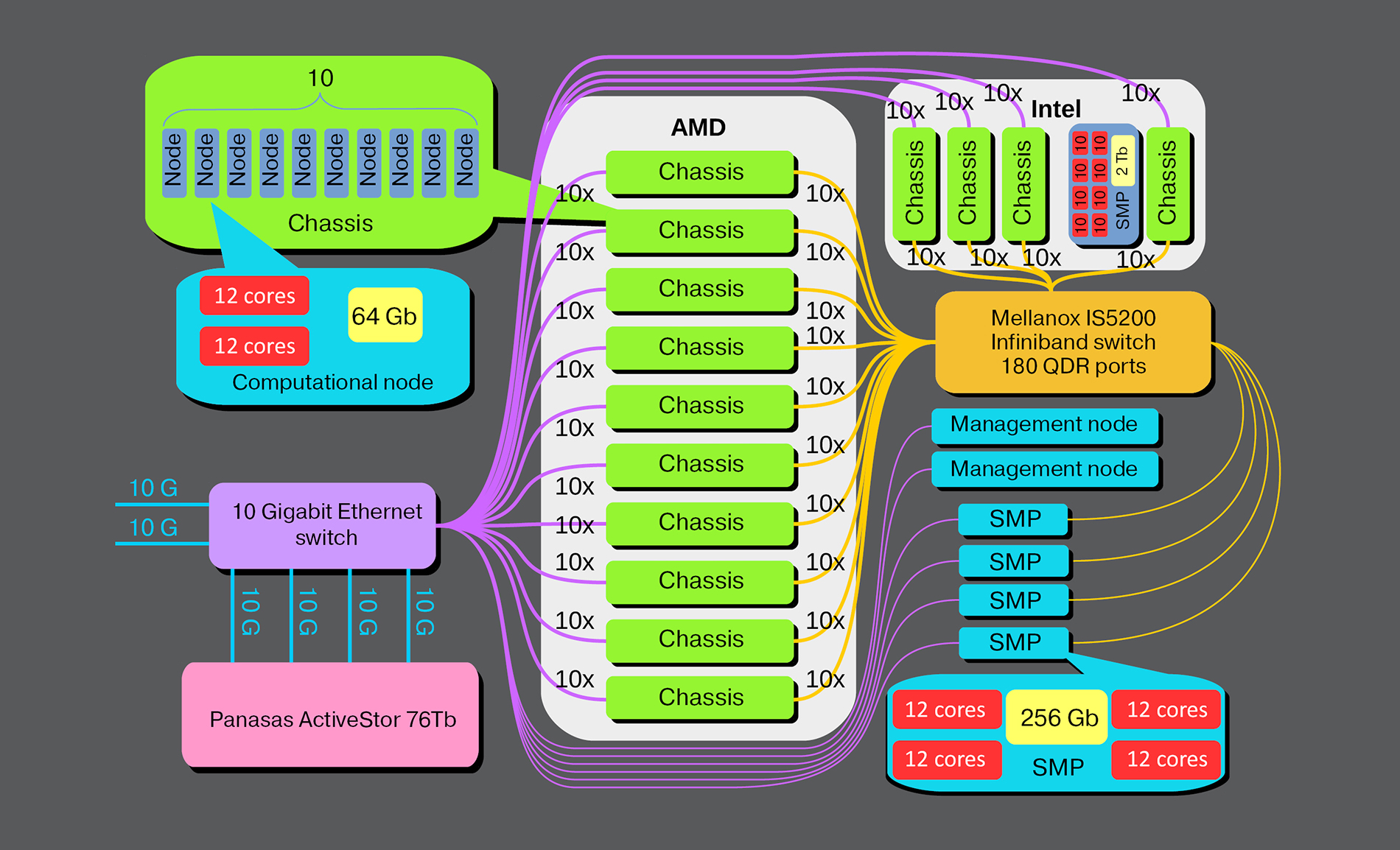
The Krylov State Research Centre is equipped with the most powerful supercomputer in Russian shipbuilding with a processing capacity of 56.13 TFlops.
Krylov’s experience gained from numerical simulations for marine engineering applications demonstrates that these techniques make it possible to
|
Total peak efficiency: |
56,12 TFLOPS |
|
Total peak efficiency without GPU |
44,42 TFLOPS |
|
Total volume of RAM: |
9280 Gb |
|
SMP: |
4 nodes 256 Gb each |
|
Communication network: |
QDR Infiniband |
|
100 nodes – AMD Opteron 6174 200 items (2400 cores) |
|
|
RAM: |
6400 Gb |
|
45 nodes – Intel Xeon E5-2697v2 90 items (1080 cores) |
|
|
RAM: |
2880 Gb DDR3 |
|
Accelerators: |
NVIDIA Kepler K20, 10 items |
|
Operational system: |
Debian |
|
Developed/Owned by |
Description |
|
Foreign software |
|
|
CD-Adapco |
Star-CCM+ |
|
Dassault Systemes |
SIMULIA/Abaqus |
|
Ansys |
Fluent, CFX |
|
Numeca |
NUMECA FINE/Marine |
|
Siemens PLM Software |
NX |
|
Open-source software (GNU General Public License) |
|
|
OpenCFD Ltd (ESI Group) |
OpenFOAM |
|
In-House Software of Krylov Centre |
|
Background work is under way with a plan to set up an industrial supercomputer centre with a computing cluster of 250 TFlops to address a wider scope of issues at the Krylov Centre.